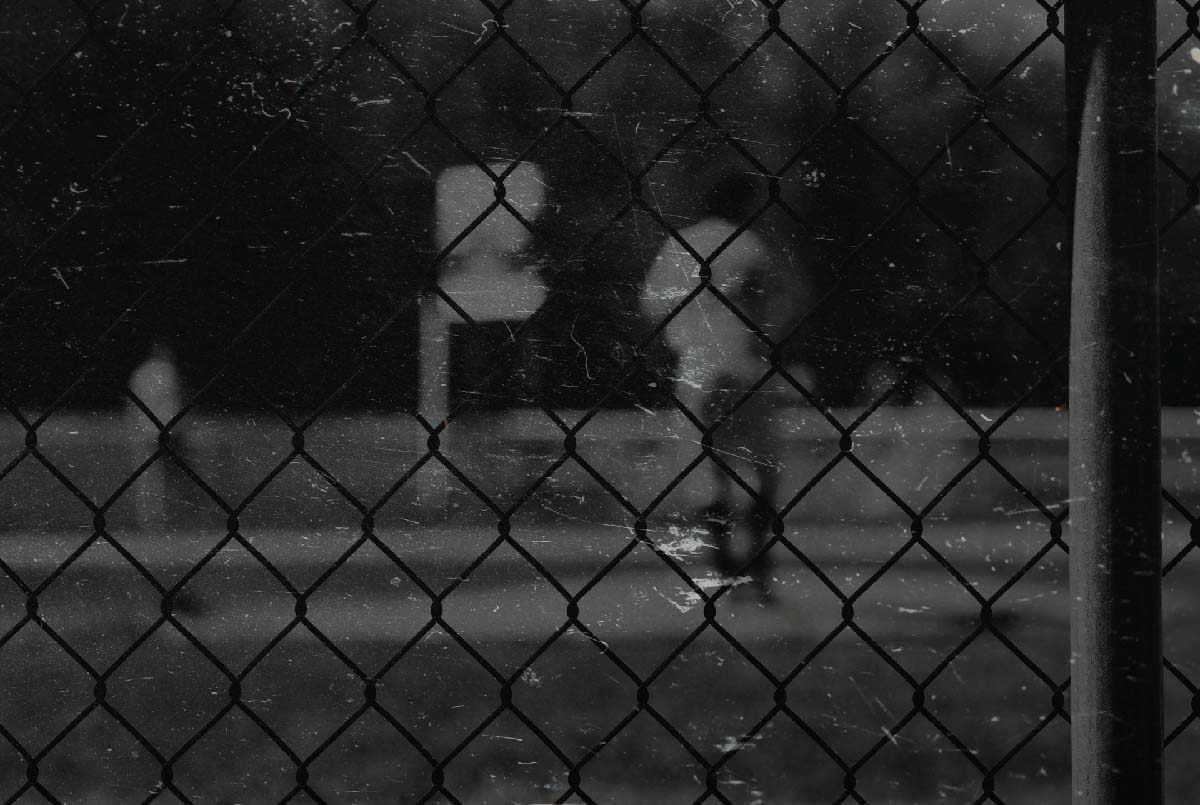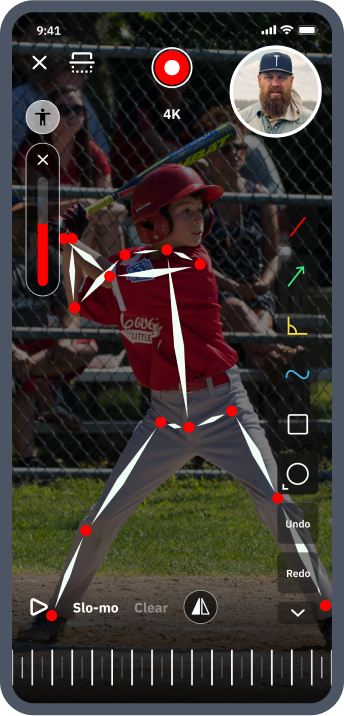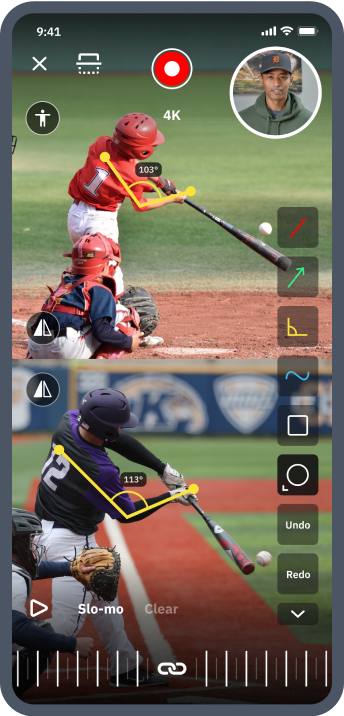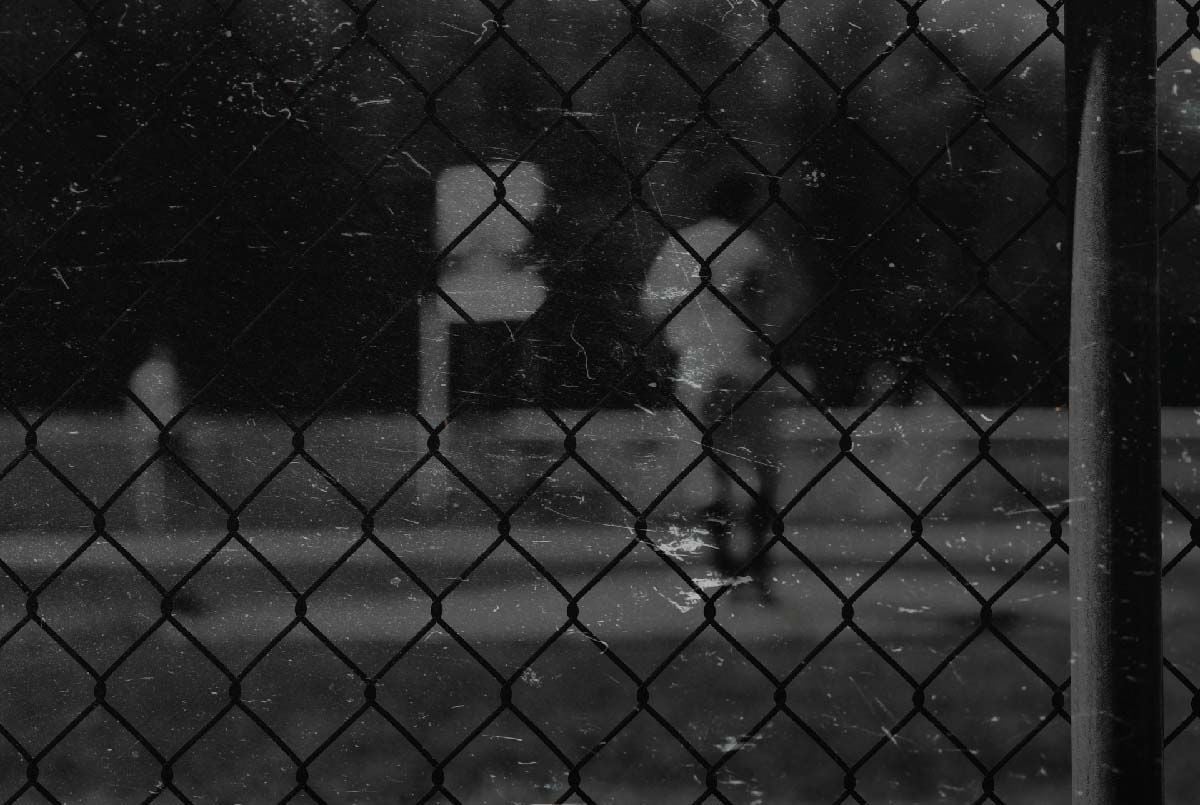Struggling? How to Get Out of a Hitting Slump in Baseball or Softball

First things first – don’t stress.
Hitting slumps happen to everyone, all the time.
Even professional baseball and softball players go through slumps. Don’t let a slump consume you and take over your life.
Instead, identify ways you can break out of a slump and work toward getting better.
What are some ways to break a slump, you ask?
This guide goes into full depth on eight tips that can really help you out.
But the TL;DR is:
To get out of a hitting slump in baseball or softball, you can try assessing your pitch selection, your timing, or your mechanics; you can also work on your mental approach, get your eyes checked, re-evaluate your bat selection, keep up the defensive and good teammate parts of your game, or get some distance away from the sport entirely for a bit.
Is It a Hitting Slump or Just a Bad Day?
Before you dive into the tips below, establish if you’re really in a slump or not.
Did you go 0 and 4 yesterday and now you’re panicking?
As Matt Antonelli of Antonelli Baseball explains in this video, one bad day does not equal a slump.
According to Matt, a slump is when you have closer to 10-20 bad at-bats in a single stretch.
He also advises you to carefully define what a “bad” at-bat even means.
Did you make solid contact with the ball but get thrown out by a good defensive play?
Did you battle with the pitcher, going deep in the count but the pitcher ended up besting you?
Instead of considering numbers only, look at the quality of your plate appearances. If you’re having good at-bats, then you’re not in a slump and the problem might be elsewhere.
To call a slump a real slump, you should analyze the swings and misses or the foul balls you have. If these are high in number and consistent across 10-20 at-bats, then you’re more likely looking at a slump.
So how do you get over a hitting slump? The following tips will help you break out.

How to Get Out of a Hitting Slump in Baseball or Softball
1. Assess Your Pitch Selection
When you find yourself in a real hitting slump, one of the first things you should consider is your pitch selection.
Are you still swinging at good pitches? Meaning pitches that are in your zone, and that you know you can drive?
Many times, hitters who are struggling will get caught up in trying to make contact with the ball – no matter what kind of contact it is. They’ll swing at bad pitches and either whiff or hit the ball weakly in the air or on the ground.
By swinging at bad pitches, you might be creating your own hitting slump.
You can practice your swing often, taking tons of reps at-batting practice. But even a perfect swing is useless if you’re swinging at a bad pitch.

2. Timing
Parents and players frequently resort to timing as a hitter’s problem. While bad timing shouldn’t be used as a catch-all to explain problems at the plate, it can be the issue sometimes.
How do you determine if you’re swinging late?
You ask yourself:
“Am I giving myself enough time in my stride and/or separation phases to be in a solid enough position to square-up the incoming pitch?”
If you’re repeatedly late on your swing, you can easily work on your timing. The most important thing to focus on is getting your front foot down earlier. This helps you set your swing up in time.

3. Mechanics
If you’ve reviewed your pitch selection and timing and you still struggle with your hitting, then it might be time to revisit your mechanics.
A lot of baseball and softball hitters try to dive into mechanics right away, as soon as they realize they’re in a slump.
Mechanics aren’t always the problem, though, so consider some other things on this list first before you start changing up your swing.
In some cases, however, the problem is in fact something that’s gone off with your swing.
Ideally, you also have some video of yourself pre-slump, when you’re hitting well. Y
ou can then compare the footage of yourself hitting well to the footage of you hitting poorly, to see where you might be going wrong.
The free analysis tools of our SeamsUp app, and others like it, makes this comparison easy. You can slow motion each swing and draw on the exact mechanics that might have changed, in order to kickstart your progress.
If you want an expert opinion, share that same video of your recent at-bat or batting cage session with the pro players, college coaches, or olympians who offer online lessons via social media or right here in our marketplace.
These world class coaches will analyze your swing and give you all the feedback, drills, and homework that you need to start smashing the ball again. You can even schedule a live streaming video lesson and get your feedback real-time from the game’s best baseball or softball authorities.
Part of fixing your mechanics though is getting in your reps. And owning both your mechanics and process.
Whether you seek professional help or not, taking more batting practice than usual or getting in more cuts off the tee can be helpful – as long as you do so intelligently and without just further reinforcing bad mechanics.
If the problem truly lies with your swing mechanics, the quickest way to eradicate it is to find out what needs optimized in your swing and then correct it with good quality repetitions.

4. Work on the Mental Side
Mechanics are only half of hitting.
Having the right mindset is essential as well.
Sometimes, baseball and softball players fall into a hitting slump because they’ve lost sight of their goals or they’ve let their nerves get the better of them.
It’s much tougher to self-diagnose and address mental problems in hitting than physical ones.
A benefit of live call online lessons or their traditional in-person counterparts, is that these lesson types allow the professional instructor to ask questions and get a clearer idea of the mindset that your struggling player is employing.
Experienced former players or high-level coaches can provide immense insights and tactics to strengthen a young ballplayer’s mental game.
One way you can improve your mental fortitude on your own daily is through practicing visualization.
Visualization is a powerful mental tool that can take time to get good at. Once you do, the results can be incredibly effective.
The more intensely you can visualize the better.
You are essentially giving your brain reps on how to make a perfect, ideal scenario happen, so you want to build the sights, sounds, feelings, and smells as vividly as possible.
Elite players often use guided visualizations recorded either in their own voice or by their coach.
Then, the recordings are played as the ballplayer either sits or stands, with a bat or without, and seeks to picture everything mentally from their usual first person perspective.
Below is a free guided visualization example script that you can use to start.
But the more scripts you have and the more that you make them your own, with your own mental triggers and goals, the better.
Simply record – or have your coach or parent record – a reading of this script with pauses after each paragraph into a phone’s Voice Memos app and then it’s ready to play anytime, anywhere:
Experts believe that mentally preparing yourself before hitting can lend you more confidence and help you relax.
You’ll want to eventually see and feel yourself crushing different pitch types and locations, until you’ve had a few game’s worth of mental at-bats each session.
See what MLB All-Star Evan Longoria has to say about visualization in this video.
5. Get Your Eyes Checked
This suggestion might sound a bit silly, but many baseball and softball players have had a noticeable decrease in hitting performance simply because their eyes had gotten more near or far-sighted and they couldn’t see the ball as well.
Even if you’ve never needed glasses or contact lenses before, your eyes might have worsened as you’ve gotten older.
Don’t overlook your vision as a culprit for your hitting slump – eyesight is crucial to successful hitting.
It’s so important that many major league baseball players often have better than 20/20 vision. And professional organizations and their experts are starting to seriously at least consider an athlete’s vision as part of their draft eligibility criteria.
If you're interesting in finding out way more about the relationship of seeing and hitting, along with the best ways to improve your hitter's pitch recognition at the plate, look no further than our free vision ultimate guide.

6. Reevaluate Your Bat
If you’ve exhausted some of these other options for getting over a hitting slump, you can take a look at your bat.
If you think your bat might be problematic, though, look at its measurements.
Ensure you’re using a bat adequately sized for your age, height, and weight. Here’s a chart to get you started:

These charts are a good guideline, but they’re not written in stone.
Always swing a bat that feels comfortable to you. Looking at size charts might help give you some insight when something is very off, though.
7. Keep the Rest of Your Game Up
It is vital not to let the rest of your game suffer as a result of your hitting slump.
A streak of poor at-bats is demoralizing, but it only drags you down if you let it. Instead of dwelling on your struggles at the plate, focus on your fielding or being a better teammate.
Keep your mind occupied on another part of your baseball or softball life or training.
There are some coaches whose go-to slump buster involves asking the struggling player to lay a few bunts down.
8. Distance from the Game
If nothing else works, you might have to take some time away from the game.
Taking a step back isn’t always possible, but sometimes it’s necessary. If it’s during the season, maybe sit a game out to clear your head. If it’s the off-season, take a few days or even a week away from baseball or softball.
Stepping back and returning fresh might give you the reset you need to get over a hitting slump.
While you’re putting distance between yourself and the game, reevaluate your goals as well.
If you’ve set a goal for a high batting average this season, maybe it’s time to rethink it. Realigning your goals is a great way to get your mind back in the right place as well.

You Can Break Out of a Hitting Slump
Going through a hitting slump in baseball or softball is nothing to be ashamed of. It doesn’t mean you’re an awful player or that your baseball or softball career is over.
All it means is that something is momentarily off.
You have all the tools you need to fix a slump. By following these tips and putting the work in, you can break yourself out of any hitting slump.
Unlock your ballplayer’s full potential
Find the perfect vetted coach to build a solid foundation or take your player's skills to new heights.
Download the free app

About the Authors
Courtney Withrow
Professional Writer
Originally from the U.S., Courtney is a Brussels-based freelance writer with a Master’s degree in International Relations. She grew up playing softball and still loves the game.

